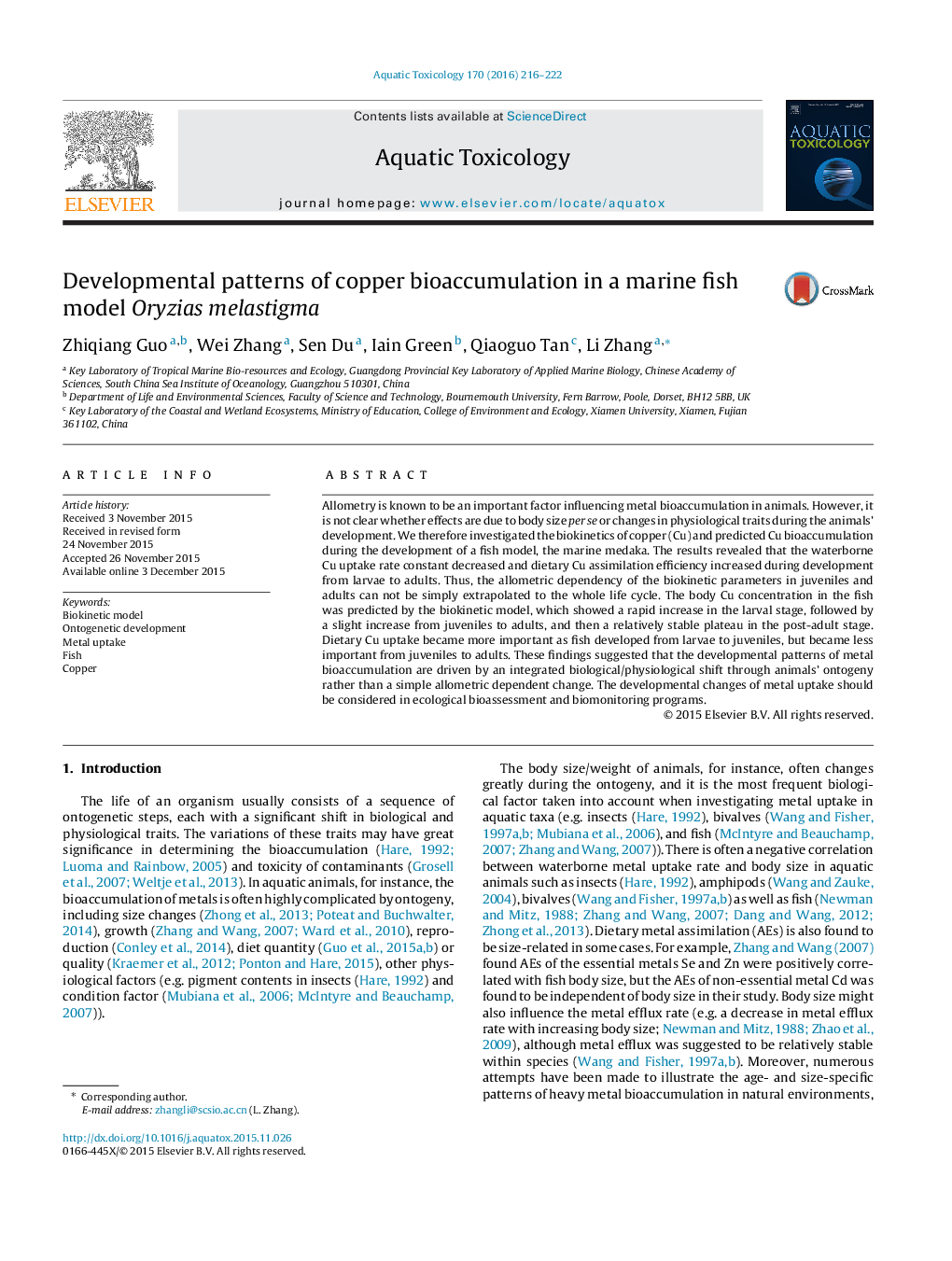| Article ID | Journal | Published Year | Pages | File Type |
|---|---|---|---|---|
| 4528981 | Aquatic Toxicology | 2016 | 7 Pages |
•Cu concentration in fish shows a rapid increase in the early life stage.•Cu concentration in fish shows a stable plateau at the post-adult stage.•The importance of dietary Cu to gross body Cu bioaccumulation maximizes in medium-sized juveniles.•Biological/physiological shifts drive developmental changes in metal bioaccumulation.
Allometry is known to be an important factor influencing metal bioaccumulation in animals. However, it is not clear whether effects are due to body size per se or changes in physiological traits during the animals’ development. We therefore investigated the biokinetics of copper (Cu) and predicted Cu bioaccumulation during the development of a fish model, the marine medaka. The results revealed that the waterborne Cu uptake rate constant decreased and dietary Cu assimilation efficiency increased during development from larvae to adults. Thus, the allometric dependency of the biokinetic parameters in juveniles and adults can not be simply extrapolated to the whole life cycle. The body Cu concentration in the fish was predicted by the biokinetic model, which showed a rapid increase in the larval stage, followed by a slight increase from juveniles to adults, and then a relatively stable plateau in the post-adult stage. Dietary Cu uptake became more important as fish developed from larvae to juveniles, but became less important from juveniles to adults. These findings suggested that the developmental patterns of metal bioaccumulation are driven by an integrated biological/physiological shift through animals’ ontogeny rather than a simple allometric dependent change. The developmental changes of metal uptake should be considered in ecological bioassessment and biomonitoring programs.
Graphical abstractFigure optionsDownload full-size imageDownload as PowerPoint slide
